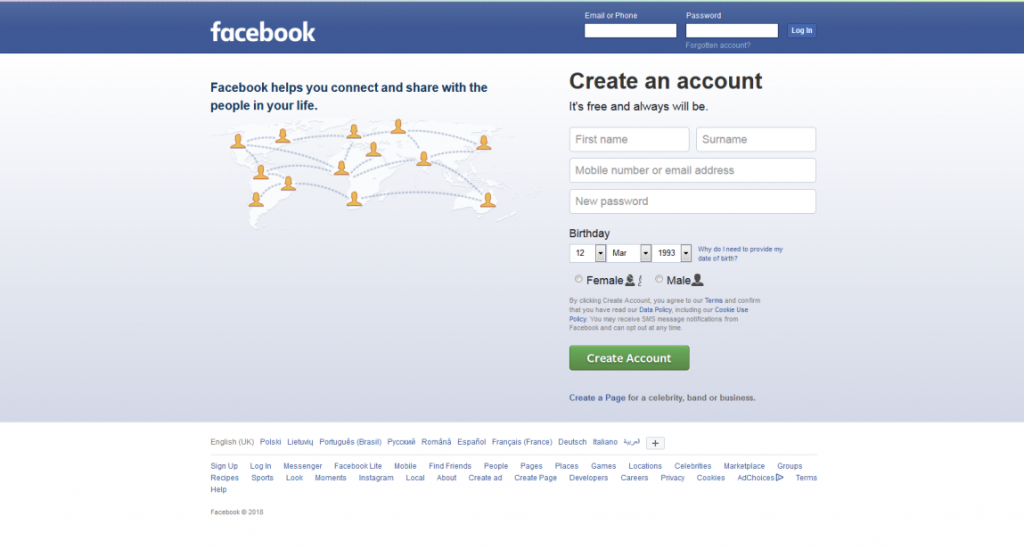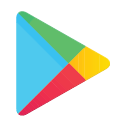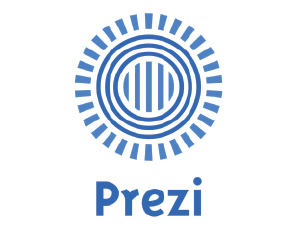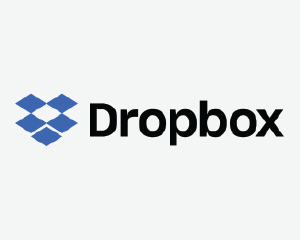
Description
Facebook is an online social media and social networking service which was launched on February 4, 2004. Facebook is accessible through a large range of devices, once they are connected to the internet. It is available as an application for tablets, iPad and smart devices, but also for desktop, laptops and smart TVs. Facebook is the most well-known and widely-used social media platform in the world today. Facebook has more than 2.2 billion monthly active users as of January 2018. Most of Facebook’s revenue comes from advertising. Facebook generally has a lower click through rate (CTR) for advertisements than most major websites. The cause of Facebook’s low CTR has been attributed to younger users enabling ad blocking software and their adeptness at ignoring advertising messages, as well as the site’s primary purpose being social communication rather than content viewing.

Key functionality
- Compatibility: Accessible through computers & mobile devices
- User accounts: Users need to register to be able to use Facebook. After registering to use the site, users can create a customized profile indicating their name, occupation, schools attended and so on.
- Privacy: Facebook enables users to choose their own privacy settings and choose who can see specific parts of their profile.
- Friends: Users can add other users as “friends”, exchange messages, post status updates, share photos, videos and links, use various software applications (“apps”), and receive notifications of activity. Additionally, users may join common-interest user groups organized by workplace, school, hobbies or other topics, and categorize their friends into lists such as “People from Work” or “Close Friends”.
- News Feed: A user’s home page is called their ‘News Feed’. This appears on every user’s homepage and highlights information including profile changes, upcoming events, news, posts from other ‘friends’ and birthdays of the user’s friends, etc.
- Ask: Facebook includes a feature that allows users to ask for information not disclosed by other users on their profiles. If a user does not provide key information, such as location, hometown, or relationship status, other users can use a new “ask” button to send a message asking about that item to the user in a single click.
- Photos: One of the most popular applications on Facebook is the Photos application, where users can upload albums and photos. Facebook allows users to upload an unlimited number of photos and to set privacy limits on whether the photographs uploaded to an album are ‘public’, or limited to ‘friends’, ‘only me’ or ‘friends of friends’.
- Likes: Boards are collections of pins dedicated to a theme such as quotations, travel, etc. Users can upload, save, sort, and manage images and other media content (e.g., videos) through collections, i.e. ‘boards’.
- Reactions: In 2016, the ‘like’ button was enhanced as Facebook officially rolled out “Reactions” to users, letting users long-press on the like button for an option to use one of five pre-defined emotions, including “Love”, “Haha”, “Wow”, “Sad”, or “Angry”.
- Profile: Each registered user on Facebook gets their own personal profile that shows their posts and content. Users are prompted to complete their profile by filling out personal information such as name, date of birth, relationship status, current city, home-town, current and past employment, current and past education, favourite books, songs, bands, movies, TV shows, sports, etc.
- Timeline: The format of individual user pages is known as a “Timeline”, a chronological feed of a user’s stories, including status updates, photos, interactions with apps, and events.
- Cover Photo: On each profile, the user can also add a “cover photo”, a large header image at the top of the Timeline.
- Facebook Live: Facebook has long had the ability to upload video, but Facebook live is a newer video option. Instead of filming and then uploading a video, you can film live directly from and to Facebook.
- Facebook Groups: Groups are a way for people of like minds to connect over a hobby or interests. For businesses, it’s a way to have interaction with a target market.
Who uses the tool

Average Facebook user has 155 “friends”
Platform
Gender
Age groups
Platforms
Privacy and user data
The app collects the following types of information from all users:
Depending on the Services used, Facebook collect different kinds of information from or about its users:
- Things others do and information they provide – content and information that other people provide when they use Facebook’s services, including information about users, such as when they share a photo of a user, send a message to a user or upload, sync or import a user’s contact information.
- User’s networks and connections – information about the people and groups that users are connected to and how they interact with them.
- Information about payments when a user buys something on Facebook, makes a purchase in a game or makes a donation, Facebook collects information about the purchase or transaction.
- Device information – Facebook collects information from or about the computers, phones or other devices where users install or access Facebook and its services.
- Information from websites and apps that use our Services – Facebook collect information when a user visits or uses third-party websites and apps that use its Services.
- Information from third-party partners – Facebook receives information about users and their activities on and off Facebook from third-party partners, such as information from a partner when they jointly offer services or from an advertiser about users’ experiences or interactions with them.
- Facebook companies – information about users from companies that are owned or operated by Facebook, in accordance with their terms and policies.
The app uses this information to:
Facebook use the information that they have (subject to choices users make) as described below, and to provide and support the Facebook Products and related services described in the Facebook Terms and Instagram Terms. Here’s how:
- Provide, personalise and improve its Products.
- Information across Facebook Products and devices.
- Location-related information.
- Product research and development.
- Face recognition.
- Ads and other sponsored content.
- Provide measurement, analytics and other business services.
- Promote safety, integrity and security.
- Communicate with users.
- Research and innovate for social good.
Terms and conditions of use can be found on this page:
Using the tool for PROMOVET
Advantages
- Facebook is so widely used that the majority, if not all, teachers and young learners involved in the PROMOVET project will have an account and experience of using it.
- Facebook has many didactic applications as it is good for sourcing and assessing the quality of information online, for sharing news, notices and notes with other teachers and learners and for documenting project work by uploading posts and photographs.
Disadvantages
- N/A





